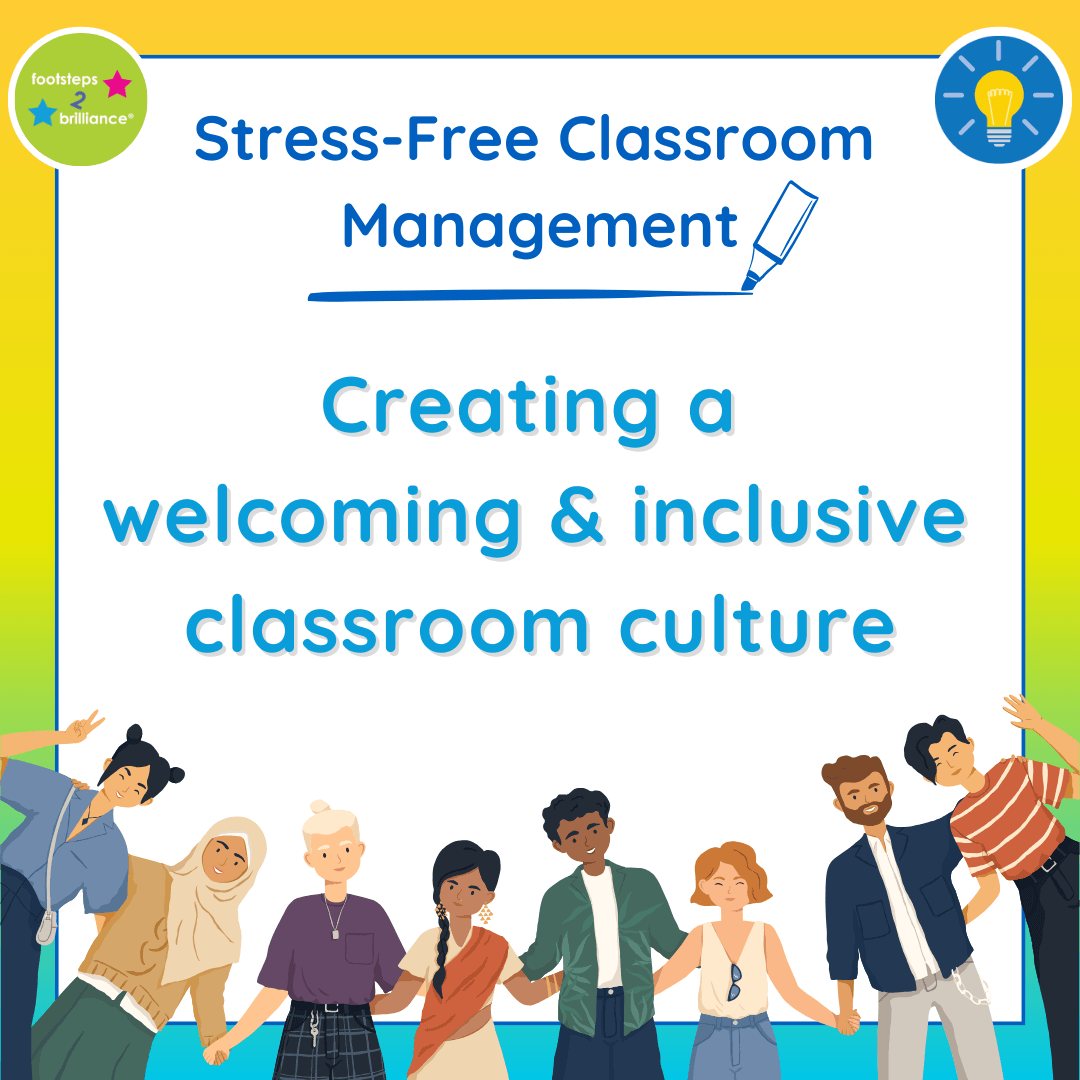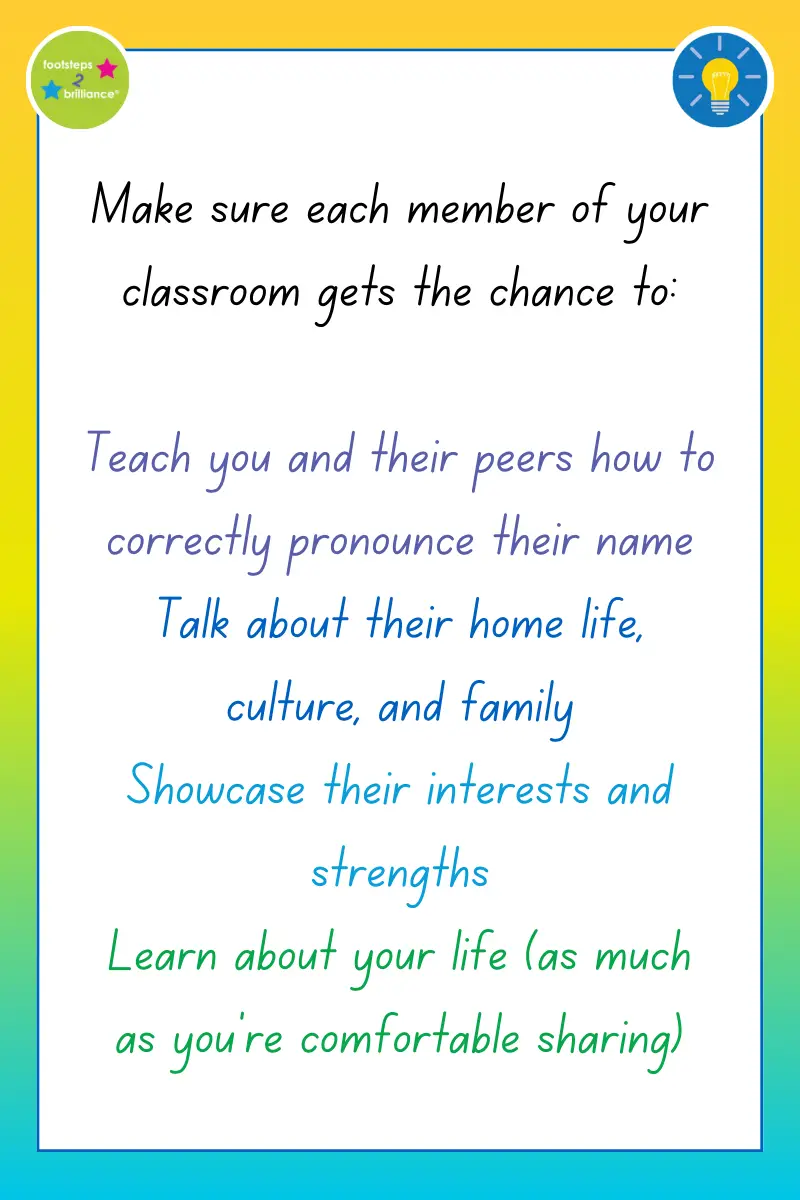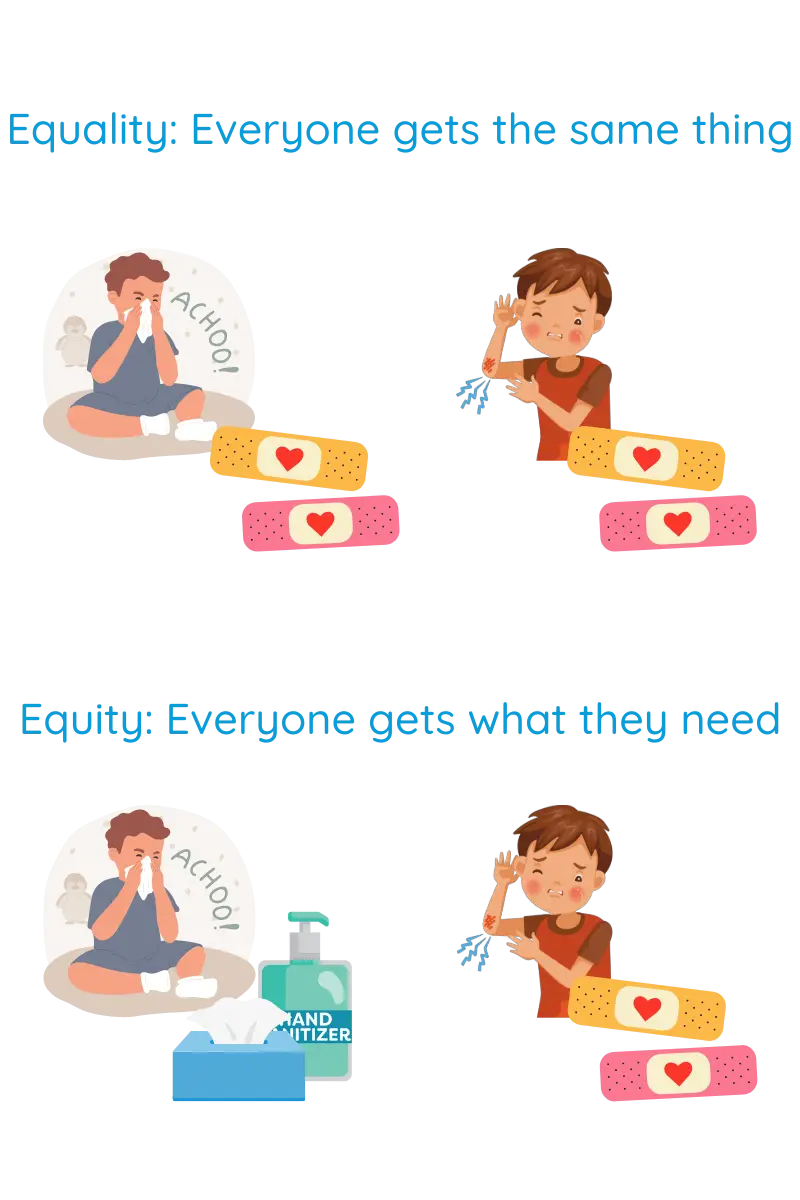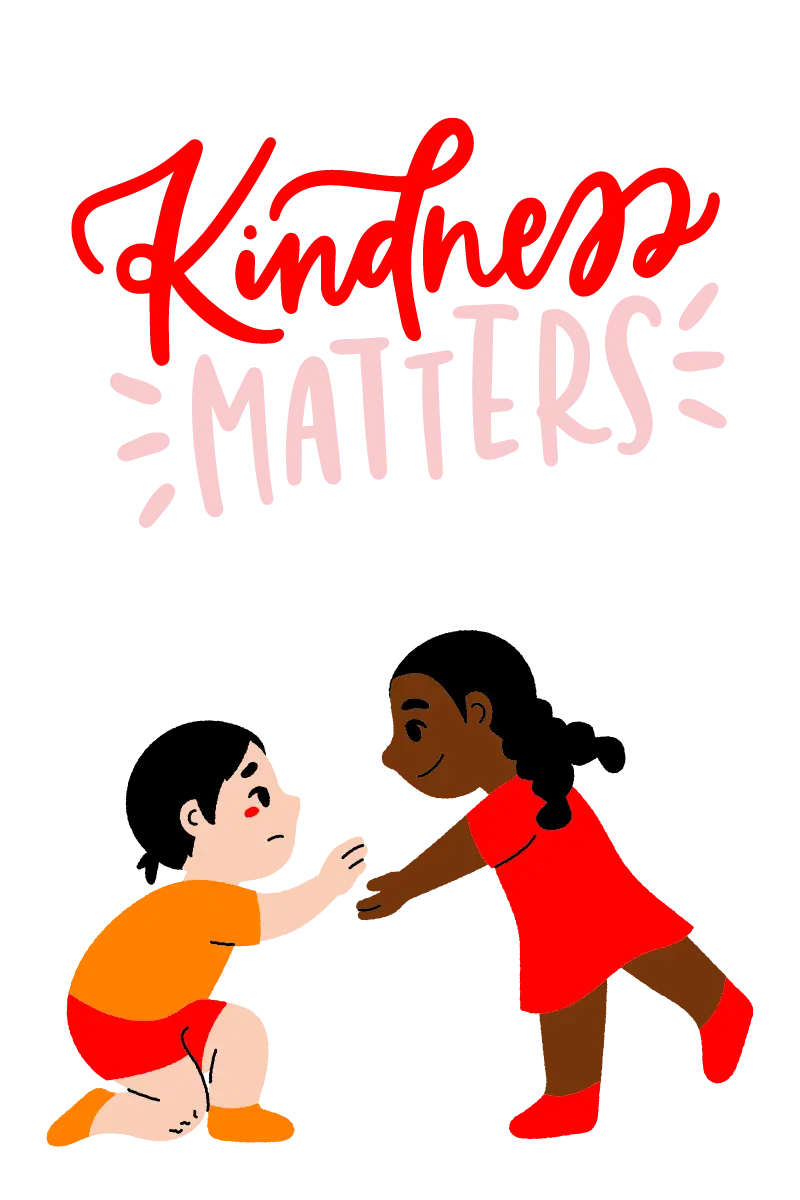
Before any learning can get done, students need to feel secure and welcome in their classroom community. This may seem obvious, but it’s so important that it could make or break your classroom management for the year. If you’ve ever felt like a fish out of water, you know that staying positive and focused in that environment can be difficult. In this article, we’ll talk about ways to set up and maintain a welcoming and inclusive classroom culture for all students. We’ll end with some real life examples to help you visualize what the fruits of this labor will be.
5 Ways to Create a Welcoming, Inclusive Classroom Culture
A classroom culture is a microcosm of a community. Each student brings their own unique strengths and personalities to the table and has an important role to play. A warm, welcoming classroom community is the foundation on which every student will thrive. Here’s how to create that community.
1. Learn About Each Other
Building relationships with your students builds trust and paves the way for easy classroom management. At the beginning of the year, devote time to getting to know your students. There are many ways to do this that engage and excite students! During transitions, you can dismiss students to line up with identity-provoking prompts such as “Line up if your birthday is in the summer,” or “Line up if you have any siblings.” You can devote time in your morning meeting or circle to show and tell or other getting to know you activities. Since students bring themselves into every subject, you can even incorporate these kinds of activities into your lesson plans – do a “Numbers About Me” activity in Math or have students craft an “All About Me” poem in Writing. These efforts foster an organic sense of connection and help students feel like they belong.

2. Promote Equity
A fun game to play at the beginning of the year that shows how equity and equality are not the same is the band aid game. All you need are a few bandaids and slips of paper. On the slips of paper, write a few common ailments. Sore throat, scraped knee, headache, paper cut. Hand them out at random to your students. Starting with a couple of injuries that a band aid would help, have each student read their ailment aloud, and then dramatize your reaction. “Oh no! That sounds terrible. Here, have a bandaid.” Keep your reaction the same as you go through the class, handing out band aids to students with sore throats and headaches. As the students giggle and protest, be sure to point out “Fair is fair. If one student gets a bandaid, everyone does.”
Facilitate and Repeat
At the end of the game, facilitate a conversation about equality (everyone gets the same thing) and equity (everyone gets what they need). Come back to this exercise throughout the year to remind students that everyone gets what they need in your classroom, even if it doesn’t look the same as someone else. This will keep student spats, jealousy, and cries of unfairness to a minimum all year long.
3. Champion Diversity
Remember that representation matters. If children see parts of their identity reflected in their classroom, they will feel like they play an important role in their community. Make sure your classroom library, posters, bulletin boards, and lesson plans represent all of your students (and beyond!). If you’re wondering how to do this, ask yourself the following questions as the architect of your classroom community:
- Who’s missing from this material?
- Does this material rely on stereotypes?
- Is this material equitable and free from bias? If not, can I explain why in an age-appropriate way?
4. Prioritize Kindness
A kind classroom is an inclusive classroom. Be sure to reward kindness and empathy wherever you see it. Set up your classroom is a way that is cooperative and collaborative, not competitive. One way to do this is by using “kindness cards” like store loyalty cards: every fifth unprompted act of kindness gets a prize, for example. Another way is to highlight a rotating student of the week and have their peers say kind things about them. If there is competition, ensure that it’s friendly and that there are no sore winners or losers. If kindness is the norm in your classroom, students will feel safe expressing themselves, being curious, and pushing their comfort zone, all of which are crucial for a thriving learning environment.
5. Talk the Talk and Walk the Walk
It is not enough to simply say that “All are welcome here.” Make sure in all these efforts, you follow through on the positive messages you send your students. Children are clever and are always able to tell when your efforts are genuine. No matter what age range or grade level you teach, your students are curious thinkers who will push back on any surface-level messages. When creating an inclusive classroom, you have to be prepared to go deeper and walk the walk. If you need resources, be sure to check your school or local library for age-appropriate read-alouds and other lesson materials. You can also log in to Footsteps2Brilliance Central and search by keyword, grade level, or language for interactive books and games. You can also click here to read an article about bringing caregivers into the classroom community for authentic cultural and linguistic representation.
Real Life Examples*
*Student names and identifying details have been changed for privacy.
One of your students, Raya, has two dads. At the beginning of the year, you took the time to get to know each student’s home life. All year long, you read books that showcase families of all kinds: families with two dads; foster families; kids who live with grandparents; kids who live with only mom; step-families, etc. Raya sees herself represented in these books. On Mother’s Day, when the class is making cards for their moms, you preemptively let everyone know that any student whose family doesn’t include a mom can make a card for any caregiver they’d like. Raya feels comfortable asking you if she can make two cards: one for her dads and one for her grandmother. She feels seen and included.
This could have gone differently. Maybe since every other student came from a traditional family, you didn’t feel the need to read books that showcase different kinds of families. Maybe you wanted to, but couldn’t find those books, posters, or lesson materials. When Mother’s Day comes around, Raya doesn’t want to feel different than her peers. She’s uncomfortable asking what to do, or embarrassed if you single her out, and ends up doodling alone.
One of your students, Clinton, struggles with disruptive behavior. He is frequently sent out of the room, asked to remove himself from the rug, or sitting out at recess. Your first graders are always paying attention, and they have deduced from this pattern that Clinton brings the class down. The class looks to him first if there’s trouble, even if he’s done nothing wrong. No one will stick up for him if he’s made a mistake. He starts to feel isolated and unwelcome in his own classroom. His outbursts become more frequent, and you spend a lot of time pulling him aside and trying to work out a behavior plan. It is a year-long struggle.
This could have gone differently. At the beginning of the year, you spent time figuring out why Clinton is struggling with disruptive behavior. You sought support early on and put preventative measures in place. You made sure not to single him out if you could avoid it. When he did need reminders or consequences, you were subtle about it and did not humiliate him in front of his peers. If you noticed students ostracizing him, you made sure to intervene and say that Clinton is an important member of our classroom community. His behavior wasn’t perfect this year, but you spent a lot less time managing disruptions than if you’d been reactive instead of proactive.
Your Warm, Welcoming Classroom Awaits!
Inclusivity is a year-long practice. By starting the year off with a warm, welcoming environment, your students will thrive, and you won’t stress as much about classroom management. Next week we’ll talk about strategies for addressing behavioral challenges.
Next post in the Stress-Free Classroom Management series:






